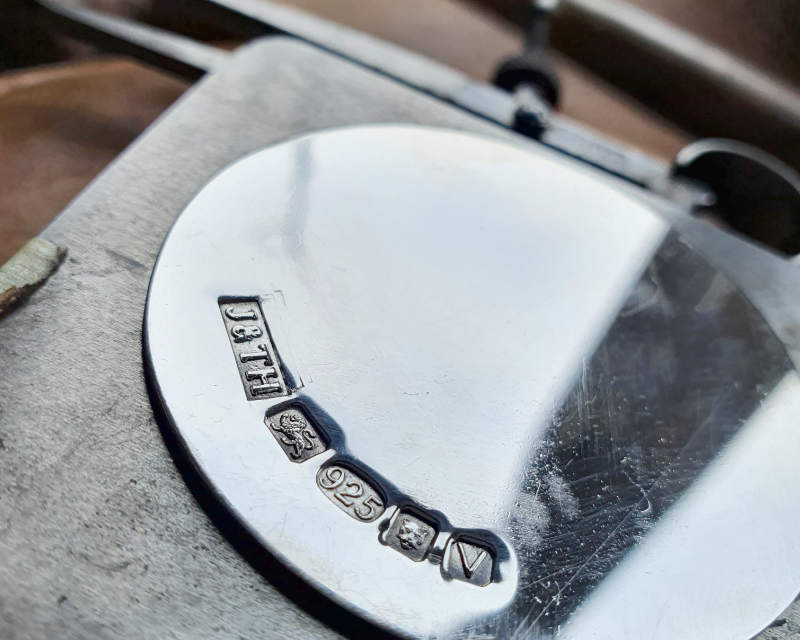
Understanding Silver: The types of silver I use to make jewellery
Share
Understanding Silver: The types of silver I use to make jewellery
Have you you’ve ever wondered why silver is also known as sterling or what 925 means? I get asked this a lot by my lovely clients, this guide is for you.
As a working silversmith, I use several types of silver, but for jewellery I mostly choose sterling. Here’s how the main types differ and what it means for your jewellery.
Sterling Silver
Hallmarked: 925
Composition: 92.5% pure silver + 7.5% copper
I use sterling silver for its balance of beauty and durability. The small addition of copper strengthens the metal without dulling its natural brightness. This makes it more resistant to wear, dents and scratches. It’s also fully recyclable and an ethical choice — my rings, bangles, earrings, necklaces and accessories are all made from hallmark-grade recycled sterling silver.
Sterling silver will naturally tarnish over time, so a quick polish with a silver cloth keeps it looking its best.

Above: A bangle made from sterling silver.
Fine Silver
Hallmarked: 999
Composition: 99.9% pure silver
Fine silver is pure, without any added alloys. It’s whiter and softer than sterling, which makes it less suited to everyday wear as it can mark or bend more easily. I use it for silversmithing projects that need more shaping and detail, its softness makes it ideal for stone settings and complex forms.

Above: a hammered piece, made from fine silver.
Argentium Silver
Hallmarked: 925 or 940
Composition: At least 93.5% pure silver
Argentium is a modern silver alloy that includes germanium to reduce tarnish and increase strength. It also allows fusing without solder, which can be useful for certain techniques. Because it’s more expensive than sterling, I use it selectively for designs that benefit from its cleaner finish and low-maintenance shine.
Britannia Silver
Hallmarked: 958
Composition: 95.8% pure silver
Britannia silver is slightly purer than sterling and has a whiter appearance. It’s been used for centuries in British silverware and still carries that sense of tradition. Because it’s softer, I don’t use it for everyday pieces.
Silver from Abroad
If you’ve bought or inherited silver from overseas, you might see different marks, or none at all. Each country has its own system of purity marks, usually expressed in parts per thousand. For example, 800 being 800/1000, or 80% pure silver.
Without a British hallmark, it’s not always possible to know the exact composition, but as a general guide:
- Europe: Many countries use stamps such as 800, 835 or 900 (80–90% purity). These standards are recognised under the International Hallmarking Convention (Vienna Convention) and listed by the Goldsmiths’ Company Assay Office, London.
- India: Hallmarking only became mandatory under the Bureau of Indian Standards (BIS) scheme in recent years, so older or handcrafted items often vary between 80–90% purity.
- Far East: Silver from Thailand, China or Indonesia is often marked 925 for export, though local or antique pieces may be slightly lower (around 900). References include the International Gem Society and the U.S. Federal Trade Commission Jewelry Guides.
Silver from abroad may differ from UK sterling (925) but can still be genuine. If you like the design, it's well-crafted by hand and it holds sentimental value, then it's precious regardless of the alloy.
Sources and Further Reading
- Goldsmiths’ Company Assay Office (London) – official UK guidance on hallmarking and international silver standards.
- Vienna Convention on the Control of Precious Metal Articles – explains hallmarking agreements across member countries.
- Bureau of Indian Standards (BIS) – India’s hallmarking and purity regulations for silver and gold.
- International Gem Society (IGS) – overview of global silver types and alloys.
- U.S. Federal Trade Commission Jewelry Guides – s_
